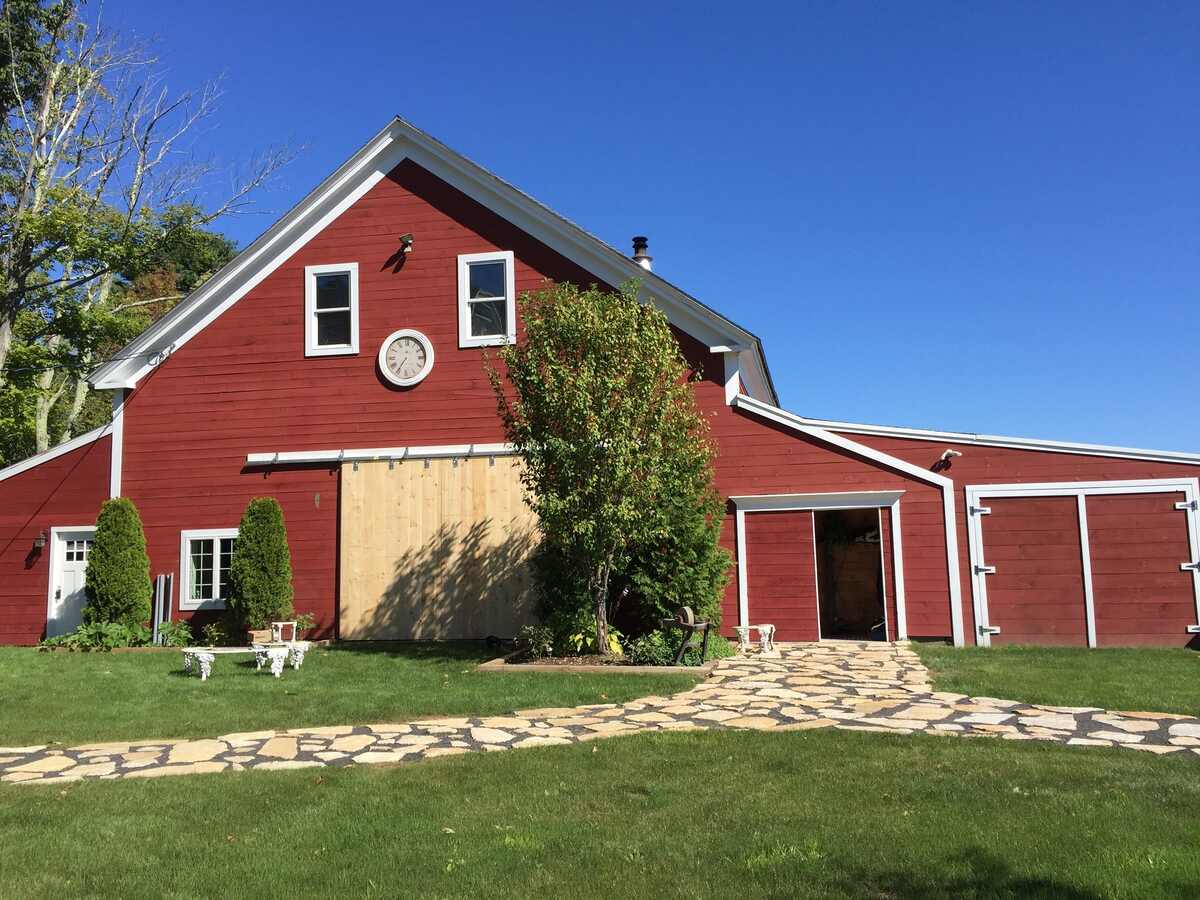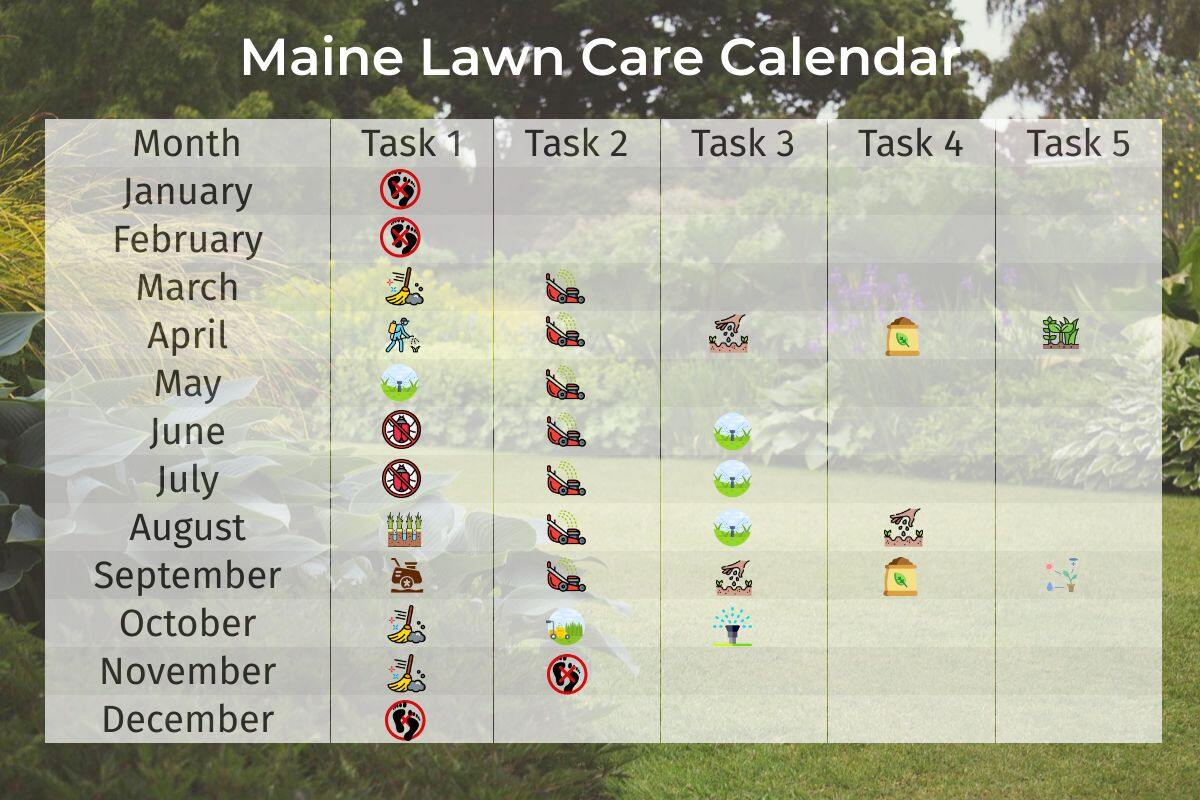
The grass is always greener… when you plant it properly, that is. But when and how to seed a lawn in Maine, you ask? It’s not as simple as just tossing seeds and hoping for a lush lawn.
No, this is Maine, the land of lobsters, blueberries, and yes, some pretty fickle weather patterns that can make growing grass challenging. But not to worry, we’ll walk you through the process every step of the way so you can seed your new lawn without needing divine intervention or a degree in botany.
When to Plant Grass Seed in Maine
Short version: Between 15 August and 15 September is the best time to seed lawns in Maine.
Long version: Maine’s end of summer to early autumn doesn’t exactly scream the perfect planting window for your next lawn. But this period offers a sweet spot because of the following:
- Soil temperature: It still maintains the summer warmth, which is perfect for proper seed germination.
- Air temperature: Corresponds to the cool season grasses’ ideal growing conditions.
- Rainfall: The fall season in Maine typically brings enough rain to keep the soil moist but not so much that you’re dealing with a flooded lawn or seed washout.
- Weed competition: Significantly less challenging than in the spring.
- Establishment time: Allows the grass to set down roots before winter kicks in, with growth continuing right up until winter dormancy.
Did you miss this golden Maine window for seeding? No problem. Your next best shot is early spring, although it can be a bit trickier with all those pesky weeds and significantly more watering needs.
And while you might be tempted to give summer seeding a go, DON’T! Heatwaves and dry spells are far from ideal for a newly seeded lawn.
How to Choose Grass Seed
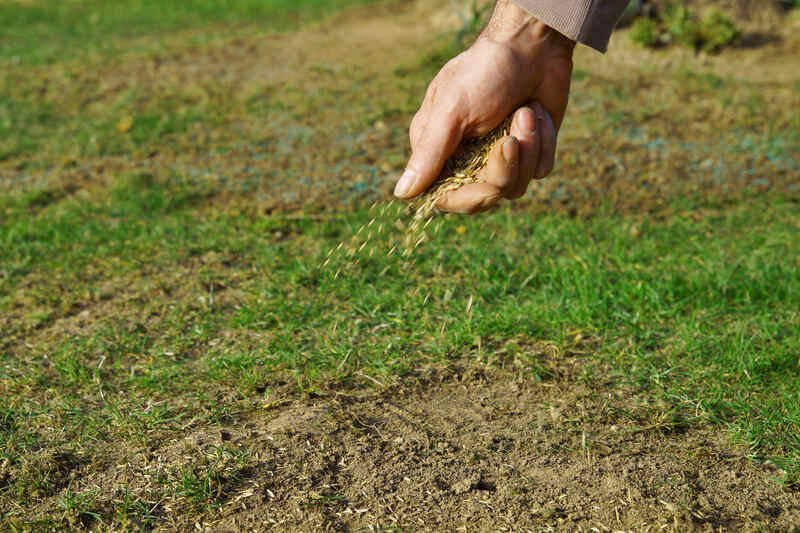
There are grass seeds, and then there are grass seeds suited for Maine’s climate and weather. The cool sea breeze, fierce winters, and notoriously acidic soil can spell disaster if you’re seeding the wrong kind.
Maine’s soil and weather conditions mean the best thing you can do is look for cool-season grasses. Here are our top choices:
- Tall fescue: This grass type doesn’t just survive cold winters; it thrives in them. It’s also known for its toughness against diseases and its ability to withstand foot traffic.
- Fine fescues (creeping red, chewings, hard fescue): These grasses do wonders in shaded spots and soils with lower fertility levels. So, if your lawn doesn’t get full sun or your soil test comes back with bad news, these grasses might be right for you.
- Kentucky bluegrass: This spreading grass does a fantastic job filling bare patches and transforming your lawn into a beautiful one, as long as it gets plenty of sun.
- Perennial ryegrass: Famous for its speedy germination and excellent for controlling erosion and mending those clumping spots of grass in your lawn.
Tip: Try a grass seed mix for better overall performance. Choosing a mix of 20% Kentucky bluegrass, 40% red fescue, 30% perennial ryegrass, and 10% Southport chewings fescue can work wonders. The genetic diversity means your lawn adapts better to whatever conditions Maine decides to throw at it.
Although these grasses are perfect for Maine in general, these grass seeds will thrive better in some parts of the state than others, depending on the microclimate and soil conditions. Here’s a quick guide:
- Northern Maine: The frosty climate up there loves cool-season grasses. Kentucky bluegrass, fine fescue, perennial ryegrass, and tall fescue are your go-to seeds.
- Western Maine: Filled with forests and plenty of shaded spots, this area needs a grass variant that can thrive in the shade. Fine fescue is a good pick here.
- Eastern Maine: This hilly region with sandy loam and heavy clay soils is perfect for grasses that don’t mind a little chill from time to time. Tall fescue and red fescue are excellent options for this region.
- Southern Maine: Go for the grasses that can withstand some foot traffic. Grass types like perennial ryegrass, Kentucky bluegrass, and tall fescue can cope with wear-and-tear while staying green.
- Central Maine: The heart of Maine has warm summers, which can be thirsty work for your lawn, so pick a drought tolerant grass type like tall fescue or Kentucky bluegrass.
- Downeast Maine: Coastal areas can be notoriously tough on grass due to sea spray and potential soil salinity. Choose a salt-tolerant grass like tall fescue, red fescue, and perennial ryegrass.
- Midcoast Maine: This region’s climate is milder compared to other areas. Kentucky bluegrass, fine fescue, red fescue, and perennial ryegrass are all great options here.
How to Prepare Soil for Seeding
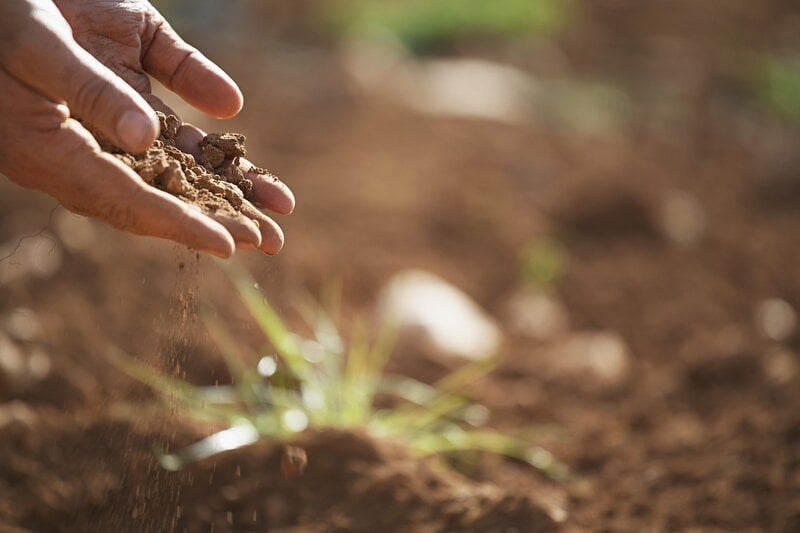
You bought the seeds and reserved the weekend for lawn planting activities. Now what? Prep work might be your least favorite part, but it’s important for healthy grass growth.
Maine’s soil is notoriously acidic, with pH levels, on average, falling between 4.5 and 5. You should aim for a more neutral pH, ideally between 6 and 7, for optimal grass growth.
Here are the main soil requirements for each grass:
| Grass Type | Soil Requirements | Required pH Level |
| Kentucky Bluegrass | Well-drained, fertile soil | 6.0 to 7.0 |
| Tall Fescue | Moist, fertile soil | 4.7 to 8.5 |
| Red Fescue | Well-drained to dry soils | 5.5 to 6.5 |
| Perennial Ryegrass | Medium to high fertility | 6.3 to 7.0 |
Here’s how to get started on preparing your soil for seeding:
Step 1. Remove existing vegetation and debris: Rocks, sticks, leaves, or anything that isn’t soil needs to be removed. To get rid of stubborn weeds, you can use a non-selective herbicide, but ensure you follow the environmental guidelines.
Step 2. Take a soil test: The soil test will help you determine the pH and nutrient status of your soil. You can get a soil testing kit from:
Step 3. Address grading and drainage issues: A soggy lawn can spell trouble for newly planted grass seeds. Make sure that water won’t pool by creating a gentle slope away from the building for proper drainage. You can install French drains in persistently wet areas.
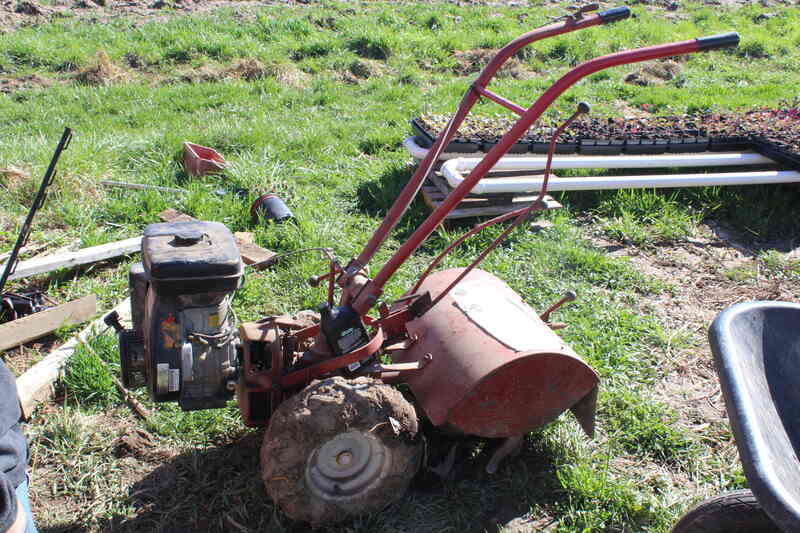
Step 4. Till the ground: Once you’ve cleared the area, use a rototiller to churn the soil about 6 to 8 inches deep. This will break up soil compaction, which can inhibit root growth.
Step 5. Amend your soil: If your soil test results indicate that it is too acidic, you may need to add certain nutrients or substances, like lime. Lime can help raise the pH to a more favorable level for grass growth.
You can also add soil amendments like compost or manure to boost the nutrient content and improve soil structure. This will also help enhance your soil’s fertility and its ability to retain moisture. Aim for a mix that includes 5 to 7% organic material for optimal grass growth.
Step 6: Level out the planting surface: After tilling and amending, rake over the area to create a smooth surface. Remove any additional debris that may have accumulated beneath the surface, and aim to create an even grade without depressions where water can collect.
Step 7. Fertilize before seeding (optional): If the soil test suggests a need for added nutrients, you might opt to apply a starter fertilizer rich in phosphorus. This will encourage strong root development. Use one specifically made for new lawns, and be sure to follow the recommended application rate for your lawn size to avoid over-fertilizing.
How to Plant Your Grass Seed
So now that your soil is prepped, it’s time for you to sow those seeds. Depending on what equipment you have on hand or what works best for your lawn size, here are some options:
- Drop spreader: Ideal for uniformly distributing seeds over large areas.
- Slit/broadcast seeder: These machines cut tiny grooves in the soil and place seeds into them directly.
- By hand: This is a good option for smaller yards or for those without access to other lawn care tools. Just make sure to spread the seeds as evenly as possible and resist the temptation to be too generous. Too much seed can lead to overcrowding and stunted growth.
Here’s how to plant grass seed successfully:
Step 1. Set seeding rate: When applying seed, always follow the seeding rates on the label. Here is a table with the Maine Cooperative Extension’s recommended seeding rates:
| Grass Types | Pounds/1,000 square feet | Pounds/acre |
| Kentucky bluegrass | 1 to 1.5 | 45 to 65 |
| Perennial ryegrass | 5 to 9 | 215 to 390 |
| Tall fescue | 5 to 7 | 215 to 300 |
| Red fescue | 3 to 4 | 130 to 175 |
| 20% perennial ryegrass + 80% Kentucky bluegrass | 2 to 2.5 | 85 to 110 |
| 50% red fescue + 50% Kentucky bluegrass | 2.5 to 3 | 110 to 130 |
| 50% perennial ryegrass + 50% Kentucky bluegrass | 3 to 3.5 | 130 to 150 |
| 50% Kentucky bluegrass + 30-40% red fescue +10-20% perennial ryegrass | 3.5 to 4 | 130 to 140 |
Step 2. Spread the seed: Split your seeds into two equal parts and spread them in opposite directions for thorough coverage. This method helps ensure even coverage and reduces the chances of missed spots or bare patches.
Step 3. Rake the seed: Lightly rake the seeds to help embed them into the soil without burying them too deep. A depth of 1/4 inch is perfect for optimal contact without the risk of inhibiting their germination and growth.
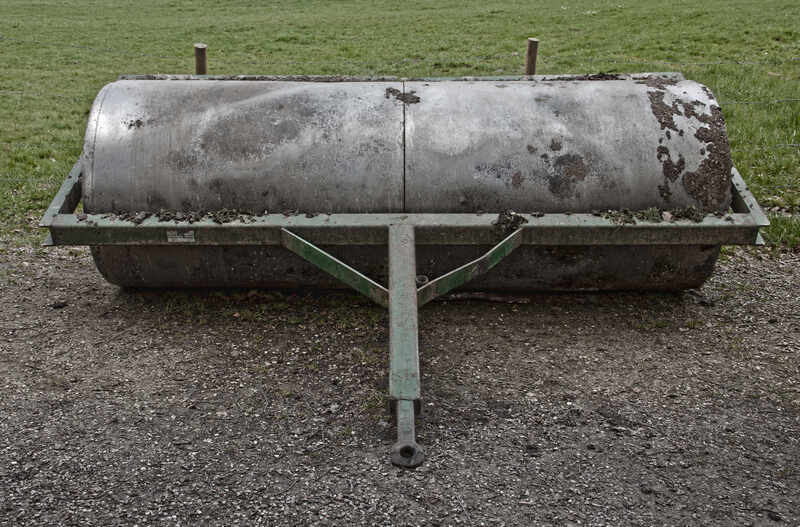
Step 4. Use a lawn roller (optional): While a lawn roller isn’t necessary, it can increase the seed-to-soil contact and improve germination.
Step 5. Mulch the seeded area: Add a light covering of straw (avoid hay due to possible weed seeds), using about one bale for every 1,000 square feet. This helps maintain moisture levels and also protects your seeds from being picked off by birds.
Step 6. Keep the soil moist: Light and frequent watering should become part of your routine. This will keep the soil moist without making it soggy. Aim to keep the top layer of soil damp by watering lightly once or twice a day.
How to Care for a Newly Seeded Lawn
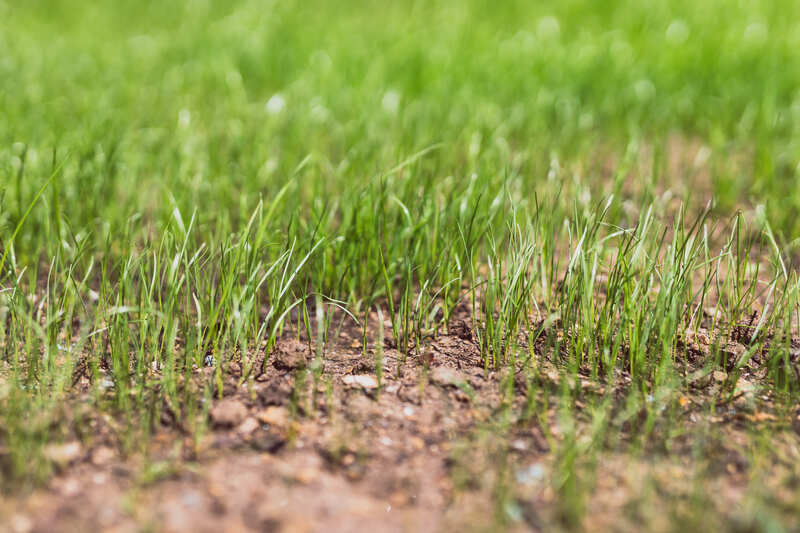
Now that the hard work is done and your lawn is freshly seeded, all you have to do is wait, right? Well, not quite. Although patience is certainly a virtue, you must still take some important actions to ensure your labor doesn’t go to waste.
Avoid Walking on the Seeded Areas
Stay off your freshly seeded lawn as much as possible. Those tiny grass shoots are delicate and can be easily harmed. Foot traffic can also disturb the seed beds, create uneven patches, and generally set back growth.
Continue the Watering Schedule
Continue watering once or twice daily to maintain a consistent moisture level in the upper layer. Don’t allow puddles to form or oversaturate the ground, as this may wash away seeds and potentially lead to fungal diseases.
As soon as those tiny green shoots start standing an inch high, you can ease off on watering just a bit. Now, your watering regimen should focus on deeper, infrequent watering to encourage root growth. Here are the recommended watering guidelines for each turf type:
| Turf Type | Inches of Water Required Per Week |
| Kentucky bluegrass | 1 |
| Perennial ryegrass | 1 to 1.5 |
| Tall fescue | 1 to 1.5 |
| Red fescue | 0.5 to 1 |
Keep Weeds at Bay
As your new grass is poking its head above the soil, so, too, will weeds. Keep an eye out for them, and if you notice any, gently pull them up with as little disturbance to your new grass as possible.
Don’t apply any herbicides at this stage. Wait until the lawn has been mowed at least three to four times before using any herbicides. When you decide it’s time to start fighting these weeds, be sure to follow guidelines for safe and effective weed spraying in your lawn.
Be Patient
Grass doesn’t grow overnight. It takes time to germinate and establish a strong root system. Below are the average establishment times for the most common types of grass seeds:
| Grass Type | Establishment |
| Kentucky bluegrass | 30 to 90 days |
| Tall fescue | 21 to 30 days |
| Fine fescue | 21 to 50 days |
| Perennial ryegrass | 14 to 21 days |
The First Mow
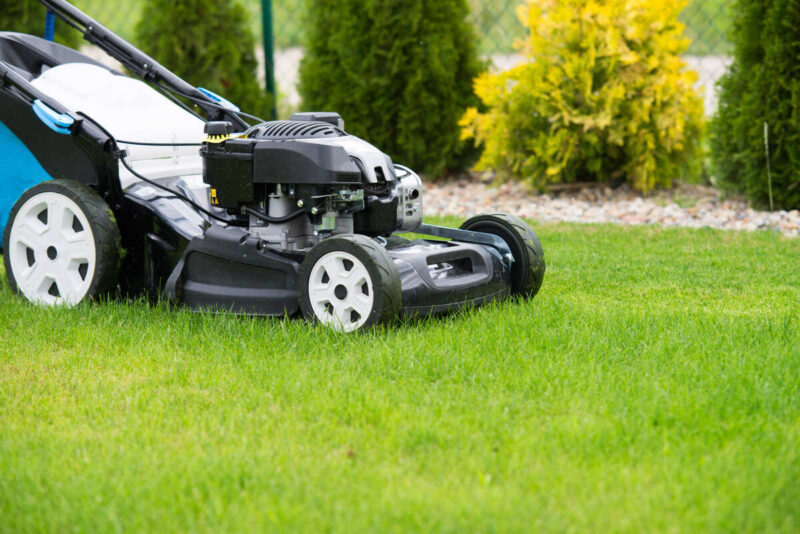
The first cut is always significant and a bit nerve-wracking, isn’t it? You’ll want to allow the new grass to gain some height, around 4 inches, before introducing it to the mower the first time.
When you start mowing, set the blade high and gradually adjust your mower down over several cuttings, but be sure never to remove more than a third of the grass in one go.
After the first couple of mowings, here are the recommended mowing heights:
| Turf Variant | Mowing Height |
| Kentucky bluegrass | 1.5 to 2.5 inches |
| Perennial ryegrass | 1.5 to 2 inches |
| Tall fescue | 2 to 3 inches |
| Red fescue | 2 to 2.5 inches |
Watch Out for Pests and Diseases
Your newborn lawn, like any youngster, can be prone to health snags. Be on the lookout for any signs of pests and diseases that could threaten its wellbeing. Here are some of the most common pests and diseases in Maine:
- Grubs: These pests feast on grassroots, potentially creating brown patches and loosened turf. Check for lawn grubs by examining the soil near affected areas.
- Crane flies: Crane fly larvae nibble away at grass roots and can leave behind some rather unsightly damage that resembles grub activity. Apply neem oil to get rid of crane flies in your lawn.
- Rust: Be on the lookout for any orange or yellow dots on grass blades, as these could be signs of leaf rust. Rust fungi are opportunistic and can take hold when your lawn is under stress from low fertility or dry conditions.
- Snow mold: Thriving in cold weather, snow mold is a fungal disease that likes to leave its mark with gray or pink spots once the snow melts. If you notice these marks on your lawn, it may be time to learn how to get rid of snow mold to save your lawn from further damage.
FAQ About Seeding a Lawn in Maine
How Often Should I Aerate My Lawn?
According to the University of Maine Cooperative Extension, you should aerate your lawn once every one to three years. Late August to early September is the ideal time for this task.
What is the Fastest-Growing Lawn Grass?
The fastest-growing grass type is perennial ryegrass. Under ideal conditions, it can germinate in as little as 5 to 7 days, making it one of the quickest options for establishing a lawn or repairing bare spots in Maine.
Can you Plant Grass Seed in November in Maine?
Planting grass seed in November in Maine is possible but not really recommended. The soil and weather conditions in November aren’t optimal for seed germination and early grass growth. Cool or freezing temperatures can impede the seeding process, meaning the seeds might not germinate until spring.
Sowing Your Way to Success
Prep work, soil testing, picking the right seed, and watering aren’t just some bullet points on a to-do list. They’re critical steps that could make the difference between a patchy lawn and the envy of the neighborhood.
While it’s entirely possible to tackle this challenge alone, wouldn’t it be better to have someone who knows exactly what Maine lawns crave?
Lawn Starter helps you connect with experienced local lawn care pros who can help you through every step in the lawn seeding process.
Main Image Credit: Spencer Means / Flickr / CC BY-SA 2.0
